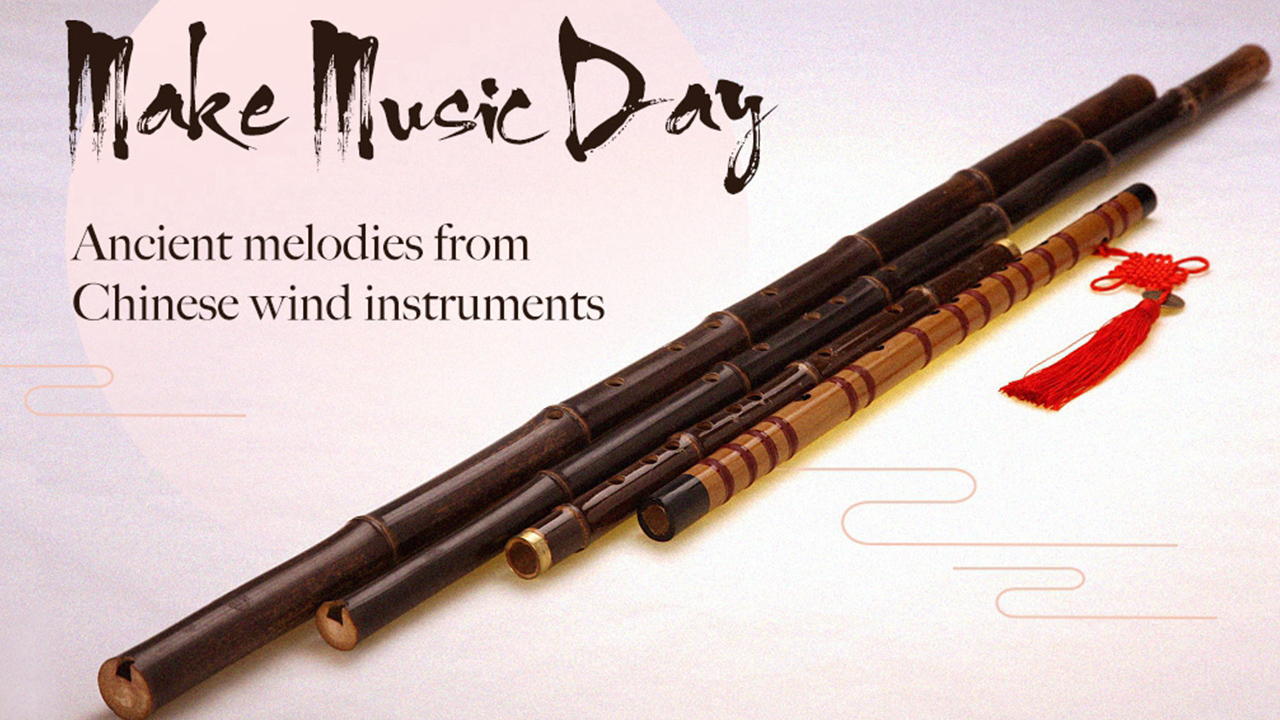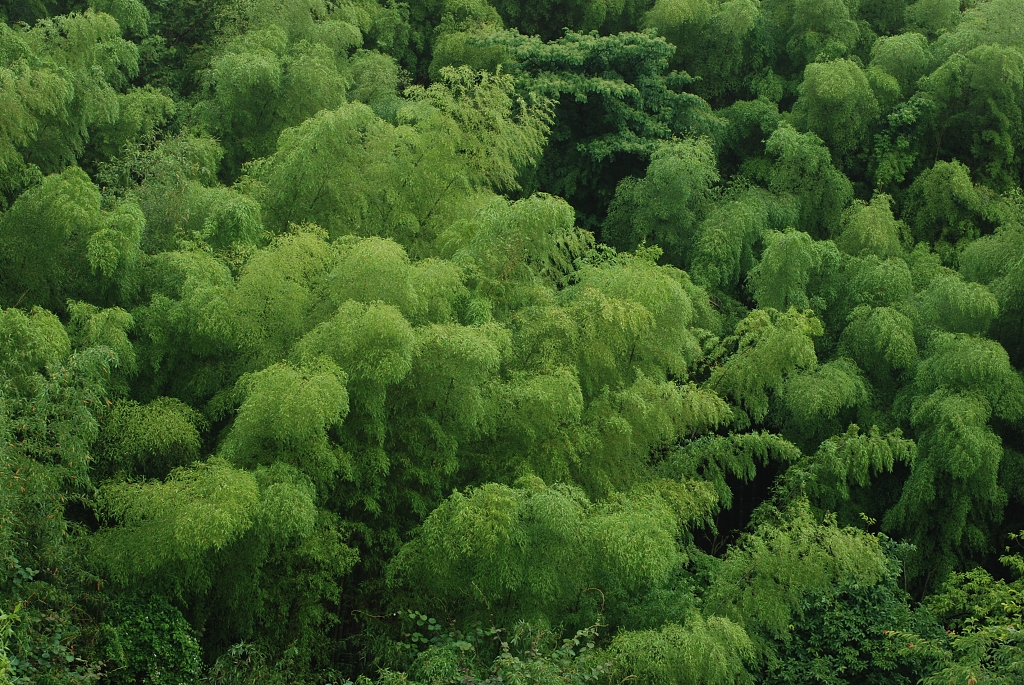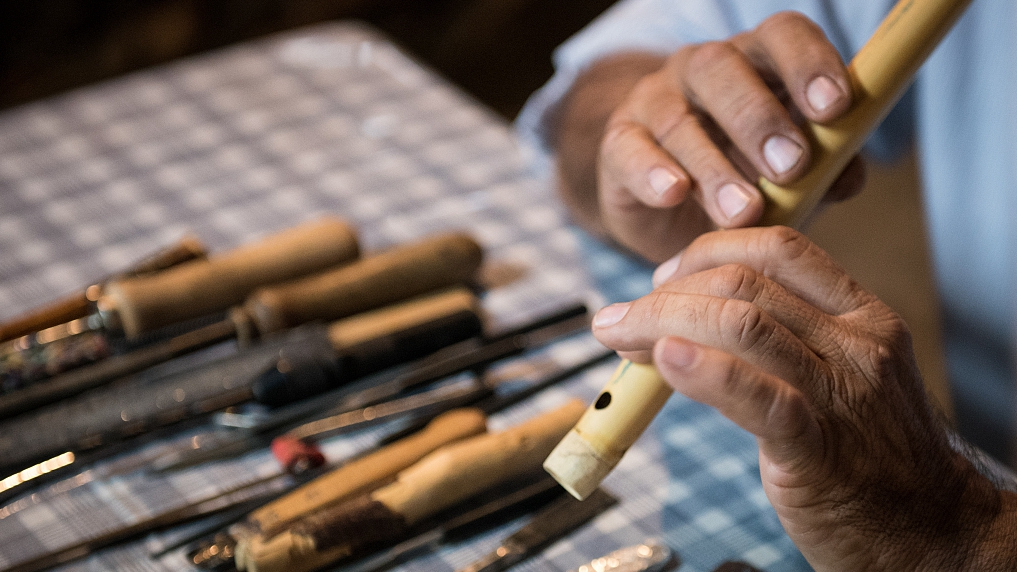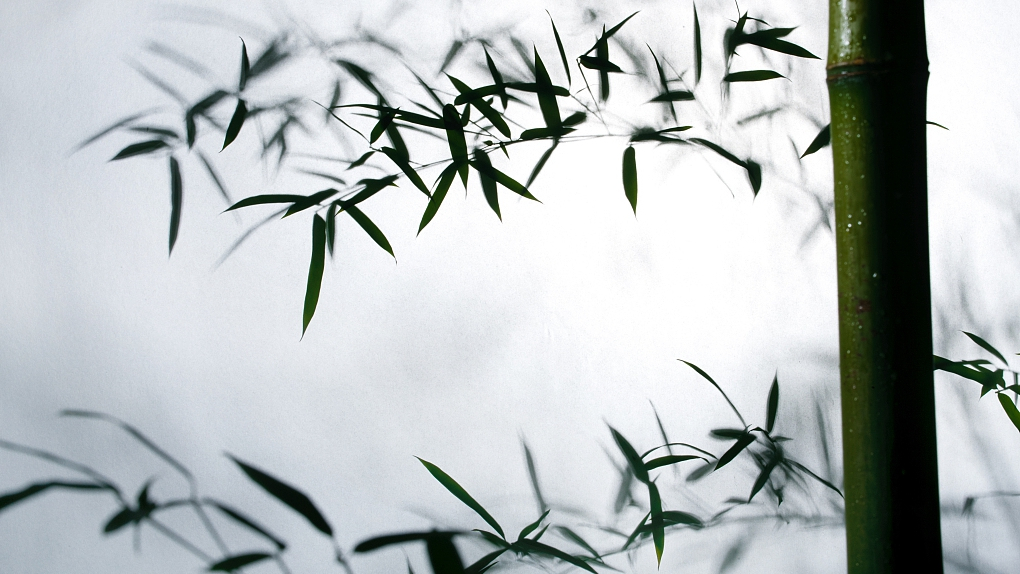

If you happened to watch one of the most well-known Chinese movies, "Hidden Dragons and Crouching Tigers," you may still remember the traditional Chinese melody in the film. The film was nominated for best original song at the Academy Awards.
The traditional Chinese wind instrument in the background music is called bamboo flute, also known as "dizi" in Mandarin. Many Chinese movies and television dramas have shown scenes of people fluting to show a profound artistic atmosphere.

Bamboo forest in China. /VCG Photo
Music across the sea of time
The bamboo flute is one of China's oldest and most iconic instruments. Historically the flute can be traced back to the Neolithic Age dated to about 9,000 years old.
In addition to its historical roots, it is a symbol of Chinese culture and comes in many different variations. The fundamental differences between them vary by a pitch and are sudi, bangdi, and alto flute.

Chinese Flute player. /VCG Photo
A beautiful story about the Chinese flute
Once upon a time, there was a young jubilant boy named Zhu Lang. Zhu grew up in a picturesque village that was surrounded by lush green mountains, quiet streets and friendly neighbors.
The young boy made his living by weaving bamboo baskets. He believed that the green bamboo held spirituality. As he roamed the forest, he picked up pieces of bamboo leaves to play classical melodies that echoed off the mountains.
A young elegant Chinese girl heard Zhu's classical melody. The artistic piece of music resonated with her, and she started to sing it.
One day, the girl asked Zhu, "Can you play this bamboo for me?" The boy looked into her deep effervescent brown eyes and without hesitation, he cut off the bamboo, drilled the middle part and dug a few holes on it. After he finished, Zhu was able to blow a different tune that sounded much grander than before.
The girl was overwhelmed with delight and loved the new instrument the boy had made, so Zhu gave it to her as a token of love.
The romantic tale is believed to be the earliest bamboo flute story.

Chinese bamboo leaves. /VCG Photo
Youthful vitality of classic wind instruments
The sound of Chinese flutes invariably carries an echo of history and currently, the instrument continues to appeal to young audiences across China.
There is a good deal of folk music communities in Chinese universities. Students who have a passion for traditional wind instruments would sit together and share their love about the bamboo flute, so-na, and cucurbit flute. Traditional music festivals have caught the attention of young people.
Every year on June 21, when the time of Chinese solar term Summer Solstice, music fans around the world will celebrate the Make Music Day. It is a free music festival that originated in France since its inception in 1982. This year, more than 3,000 music shows will be performed on stage in about 200 cities across China. Music lovers can enjoy listening to the classic melodies of traditional Chinese wind instruments.
Video editor: Xu Xiaotong
Top image designer: Liu Shanzhen

Copyright © 2018 CGTN. Beijing ICP prepared NO.16065310-3
Copyright © 2018 CGTN. Beijing ICP prepared NO.16065310-3